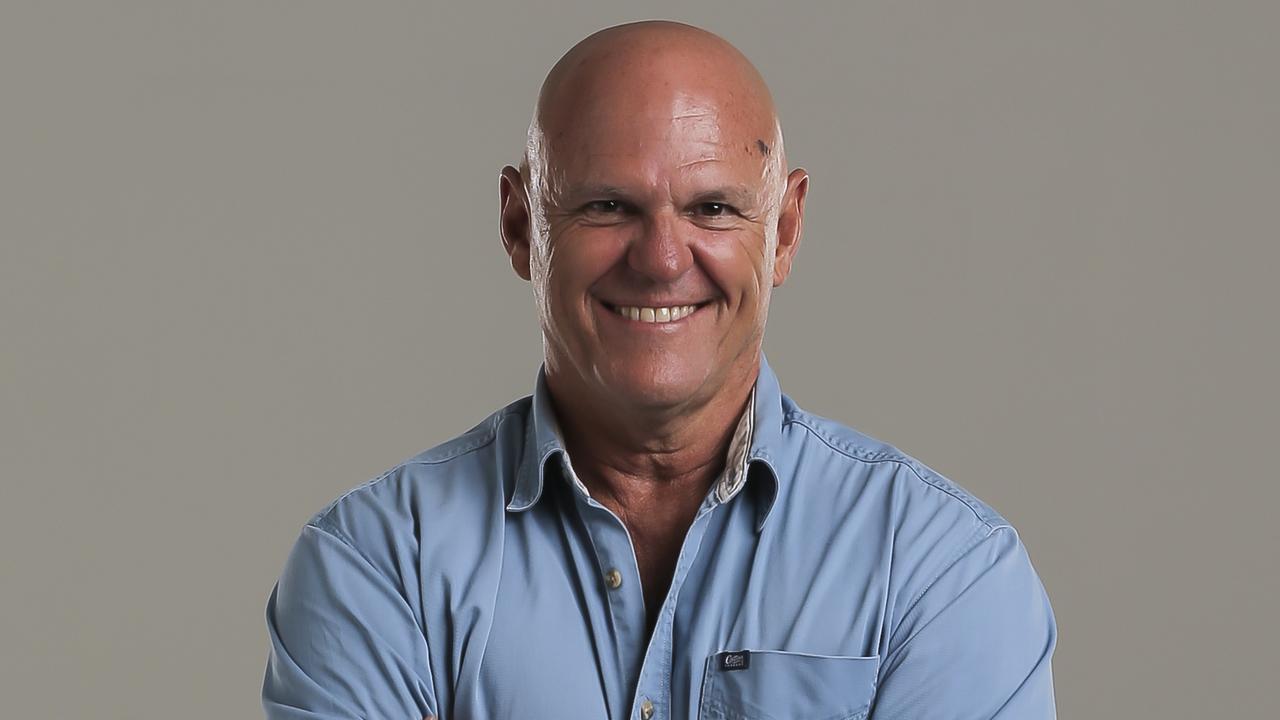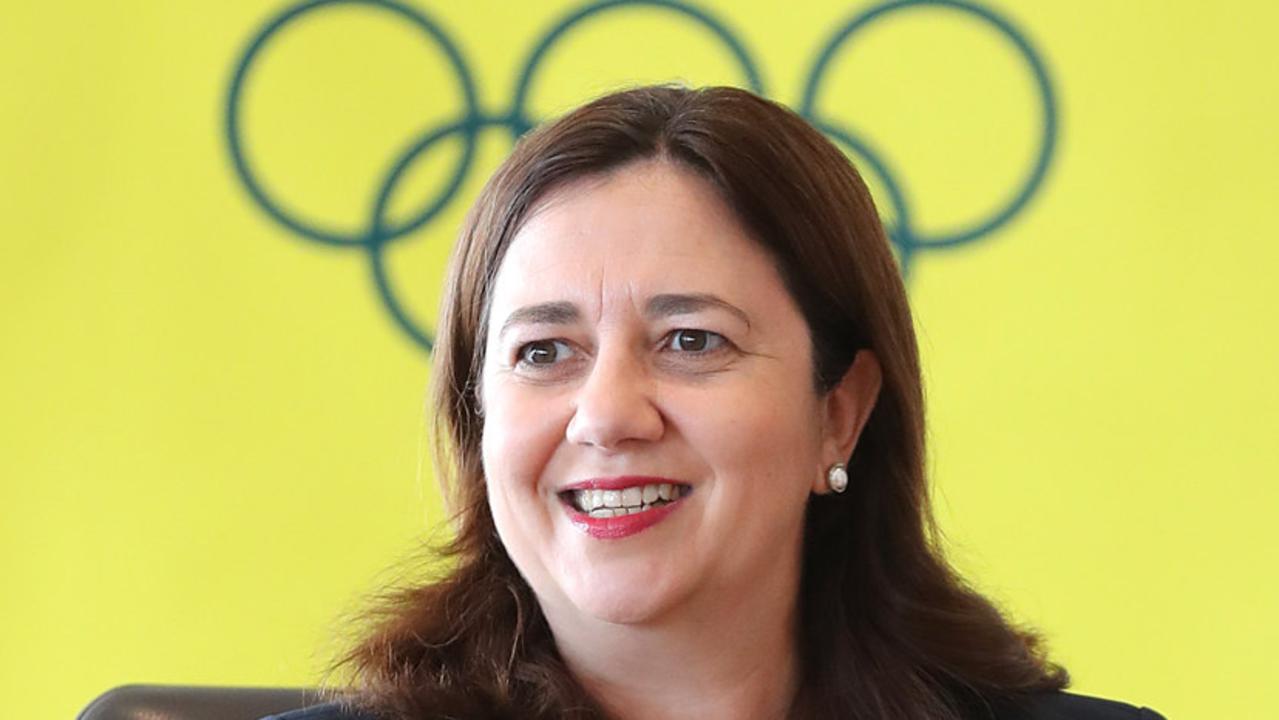Opinion: Buses are the answer after years of inaction on southeast transport
SUCCESSIVE governments have chosen to ignore the signs, and now an epic crunch is headed for southeast Queensland, writes Steven Wardill.
Opinion
Don't miss out on the headlines from Opinion. Followed categories will be added to My News.
WITHIN two decades, another 1.5 million people will call southeast Queensland home. These types of population projections are nothing new for one of Australia’s fastest-growing regions.
Yet time and again, governments have been caught short in their attempts to match infrastructure and services with demand.
Hospitals, electricity, water and, of course, transport have all been the subject of rushed solutions because political inertia caused a crisis.
In each case, governments were warned.
However political attention is innately drawn towards populist causes that should not necessarily be priorities.
The growth coming the southeast’s way is the same challenge, but on a different scale.
It is expected that the biggest population increases will be in the satellite cities of Logan, Ipswich and Moreton Bay, while inner Brisbane, from the city centre to inner suburbs, will remain the epicentre of employment.
That means there’s an epic crunch coming for the morning and afternoon commutes.
The challenge will be to provide mass public transport systems that are efficient and inexpensive so people actually start using them.
The Queensland Government has rightly fixed its attention on the $5.4 billion Cross River Rail project.
While the 10.2km rail route has its detractors because of price and predicted patronage, over the long term it is a no-brainer.

Cross River Rail will provide an additional link over the river, allowing system-wide increases to services to meet future demand.
However a public transport system is only effective when people live close to high-frequency services.
And our current rail network is largely cross-shaped with few spur lines, which Cross River Rail will not address.
What’s needed are the spokes in between – public transport routes that service satellite cities and suburbs that are nowhere near a railway station.
This is not a news flash to transport planners.
Brisbane’s dedicated busway system was envisaged to fulfil this precise purpose.
However, the problem is, what’s been built is but a shadow of the original vision.
And next to nothing has been done in the past decade to plan, price and, most importantly, figure out a way to pay to complete it.
The original network proposed in the mid-1990s went from Aspley in the north to Capalaba in the east, Logan Hyperdome to the south and a future western route.
The network mirrored and extended Brisbane’s old tram network, which was ripped up in the late 1960s.
While part of the southern stretch of the busway has been built (and been an outstanding success), construction of the eastern and northern sections stopped in the inner city years ago.
In 2006, then transport minister Paul Lucas was promising 15-minute travel time savings for city-bound Capalaba residents when that government was gung-ho about the Eastern Busway.
“One thing is for certain,” Lucas insisted at the time, “a do-nothing approach is not an option.”

However, that’s precisely the approach that has been taken since.
This goes some way towards explaining why public transport patronage has flatlined.
Integrated ticketing, new buses and trains, and in recent times the Government’s much-hyped “fairer fares” haven’t helped.
In fact, the share of commuters taking public transport to work in southeast Queensland is actually less now than it was in the 1980s.
This can be attributed to the population spreading further out into satellite cities and suburbs where services are scant.
It’s difficult to convince government to expand into these areas, not just because of the upfront price of infrastructure but because ticket prices currently cover less than a third of service costs.
At the same time, it’s difficult to convince commuters to take public transport when fewer than one in four lives within 400 metres of a high-frequency stop and taking the car remains quicker.
However most of the southeast’s predicted growth hot spots are where the spread has already begun to occur and where the busways were envisaged to be.
So the question needs to be asked, what work is under way now to ensure these networks are built in the near future?
The State Government, at least, seems aware that the Northern and Eastern busways should be the next big things.

It promised $75 million on so-called “transitways” during November’s state election, which would run from where the busways currently stop, from Kedron to Chermside in the north, and Stones Corner to Carindale in the east.
However, transitway is really just a tarted-up name for a bus lane. They’re simply a stopgap solution for where dedicated busways should be present.
Lord Mayor Graham Quirk is commandeering the existing network for his Brisbane Metro proposal, which is really just big bendy buses and a solution to the congested Culture Centre stop.
But, like Cross River Rail, this plan just improves rather than expands the existing network.
Redland Mayor Karen Williams is leading the charge for the Eastern Busway.
Given 60 per cent of Redland residents travel elsewhere for work, Cr Williams is on the right track.
But what’s needed is a region-wide approach to planning and building the remaining busway network, as well as analysis of private funding and operating models to ascertain whether this could fast-track construction.
We’ve already spent over two decades talking about dedicated busways while resting on the laurels of what has already been built.
A plan is needed to progress the network before population growth grinds congestion to a stop.
NEW CRAZE TO HIT STREETS
THE city that served up Uber is poised to unleash another revolution on the streets of major metropolises.
And just like Uber, it will excite riders but cause no shortage of angst for regulators.
The revolution is shareable electric scooters.
Hundreds have now inundated San Francisco’s streets since three companies were launched simultaneously in late March.
Users simply download an app and pay $1 to start the scooter and a further 15¢ a minute until they end their ride.
The three companies, Bird, LimeBike and Spin, each spruik the scooters as an innovative “last mile transport solution”.
Unlike docking stations for Brisbane’s shared bikes, riders locate available scooters through the GPS on the app and leave them on the footpath when they’re finished.
The companies pay people a fee to pick up and charge scooters when their batteries run out and to collect them at night.
These aren’t fly-by-night operations. Hundreds of millions of dollars have been raised from Silicon Valley venture capitalists to take the scooter craze to cities across the world.
Brisbane would be an ideal destination. From the CBD to South Bank, tourists could take in the city’s sights. The Gold Coast and Cairns would also work.

However, San Francisco denizens aren’t all impressed with their new mode of transport. It’s been dubbed Scootergeddon by some.
With a top speed of 25km, the scooters can be dangerous when they are illegally ridden on a footpath at pace.
Users are also routinely seen riding them around the city without a helmet, although that’s not that different from Brisbane’s bikes.
Thanks to vandals, there’s also a thriving repair market.
Such was the angst that San Francisco city officials recently ordered the scooters off the street until the companies received one of the new “Powered Scooter Share Permits”.
Apart from ponying up a fee for the city, the companies will have to share rider data, show how they’ll keep patrons off footpaths and offer discounts to low-income riders.
“San Francisco supports transportation innovation, but it cannot come at the price of public safety,” the city said.
That statement sounds similar to what cities around the world were saying about Uber before eventually legalising the popular ride-sharing service.
The scooter companies also say they’re excited about the permit process because it means San Francisco has formally allowed
the revolution.
That outcome will only embolden the financial backers.
And that means sooner or later, Scootergeddon is bound for Brisbane roads.


